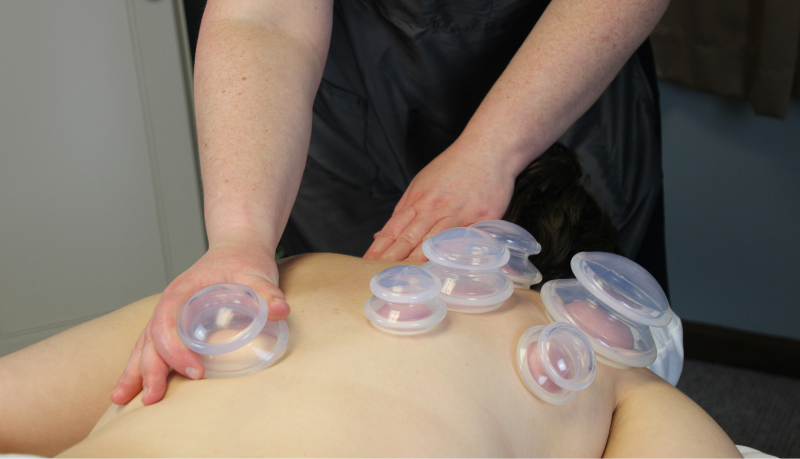Cupping therapy is a technique using suction to pull blood and fluid that is stuck in the muscles to the surface layers of the skin to put it back into the bloodstream for processing. The newly oxygenated blood then flows back into the area to promote healing. Cupping originated in Asia thousands of years ago. Cupping is noninvasive; it decompresses the muscles instead of compressing with regular therapeutic massage. Since it’s noninvasive, many athletes at the Olympics (made popular by Michael Phelps) were getting cupped right before their events.
What kind of results might I experience?
- I have one client that can only handle very light pressure on their mid to low back. After using 4 cups on the lower back for 10 minutes, the muscles had loosened up. They were then able to take more pressure resulting in a deeper, more therapeutic massage.
- A client last night said cupping made his legs feel more youthful.
- I’ve been working on a 12 year-old with severe scoliosis each week. She thinks the cupping helps keep her muscles looser than massage alone.
What are some health issues that cupping is contraindicated for?
Edema, cancer, open wounds, inflamed skin, blood thinner medication, and recent surgery or injections to name a few. We can chat about any concerns at your next session.
Does cupping hurt?
Nope, it could feel like a slight pinch due to the suction at first, but it will shortly dissipate. You may be more sore after your first cupping session. It will get better over time and we can always make adjustments each session. Cupping can leave marks that are often confused with bruises. The marks are just the blood flow coming to the surface.
How long will the cupping marks last on me?
Anywhere between overnight to 14 days. Typically 3-5 days.
Not sure if cupping is right for you? Call us at (610) 653-7701.
Here are some videos explaining cupping:
Kelly & Ryan Show
News Report
